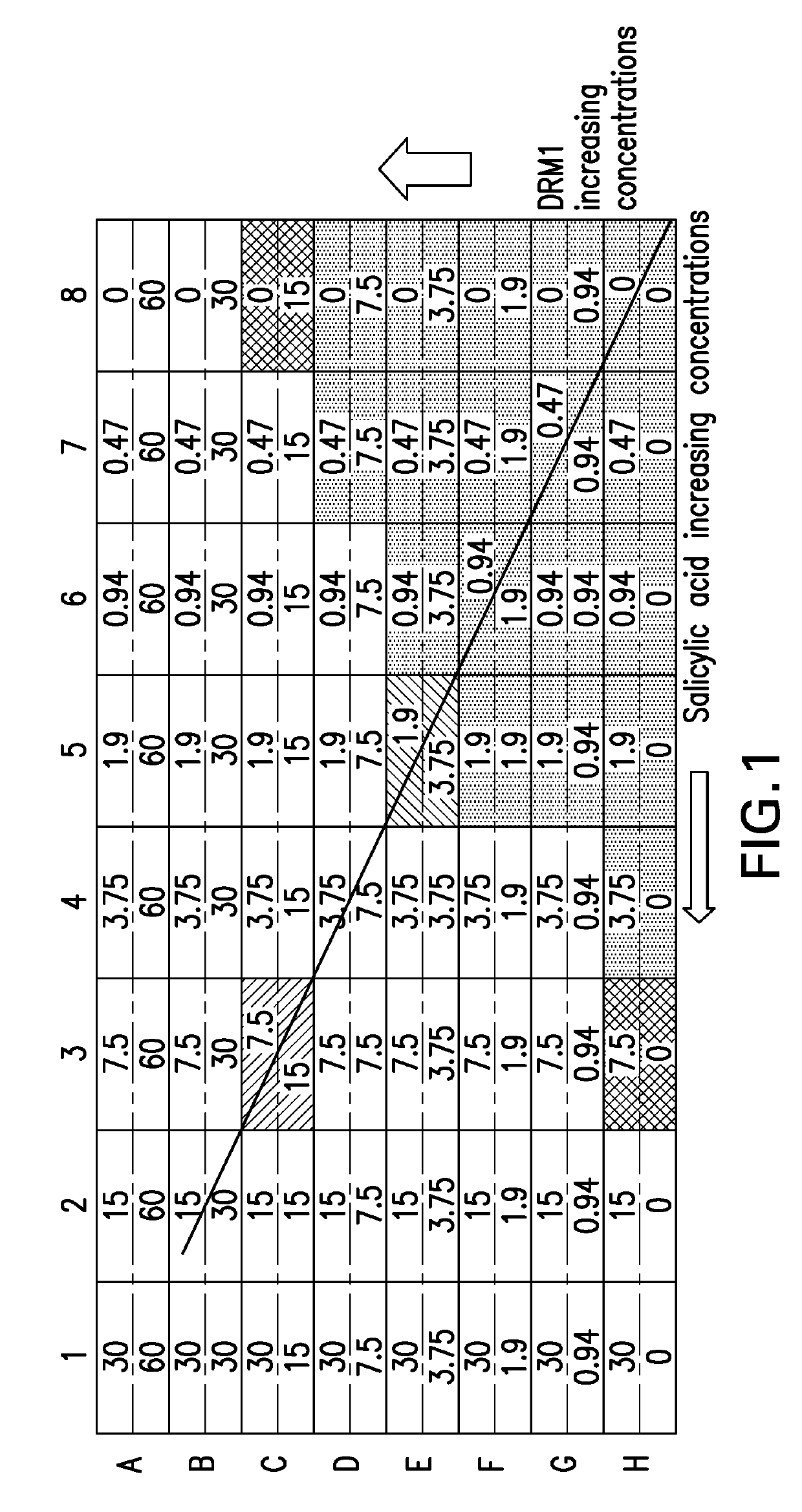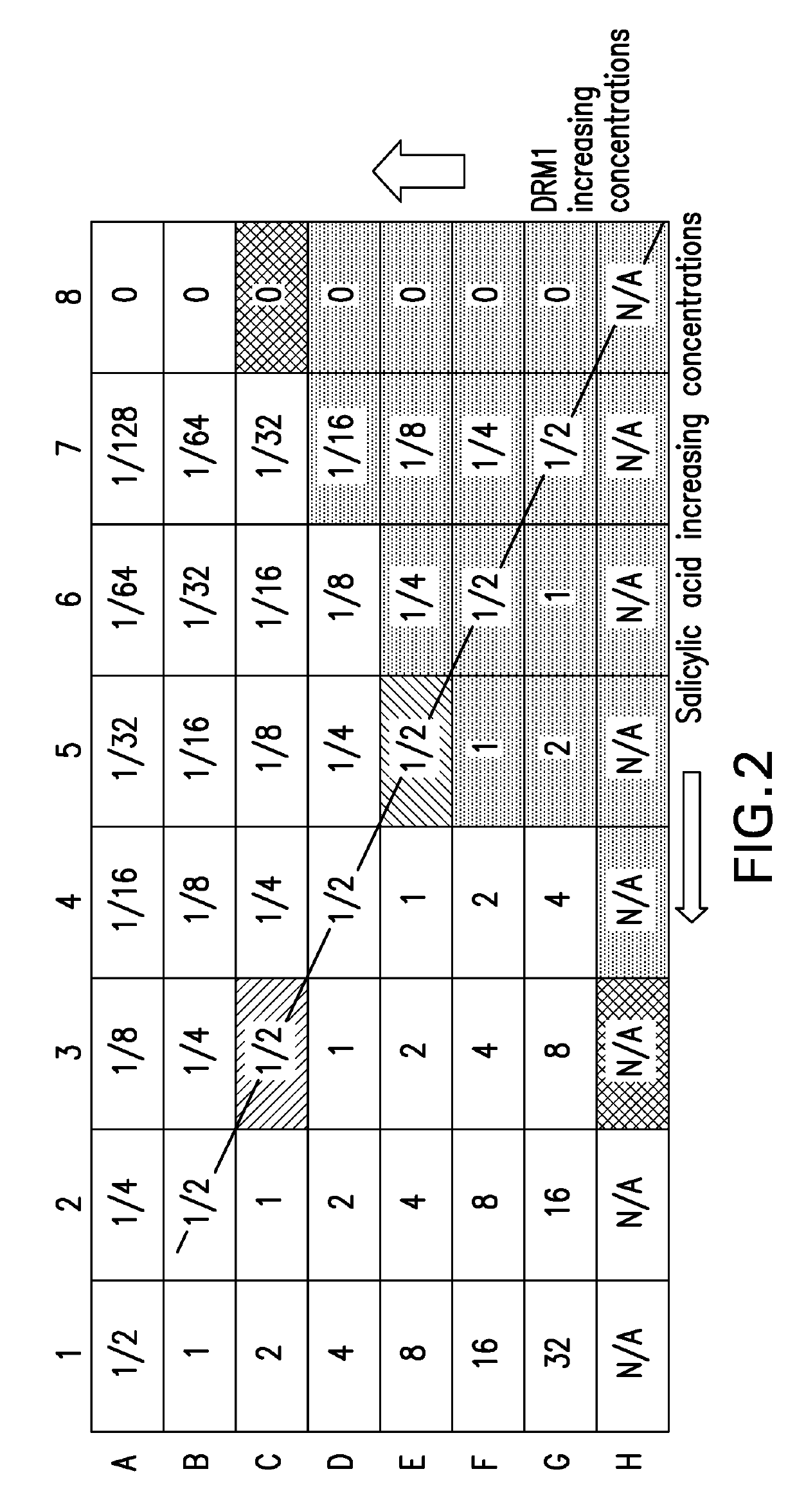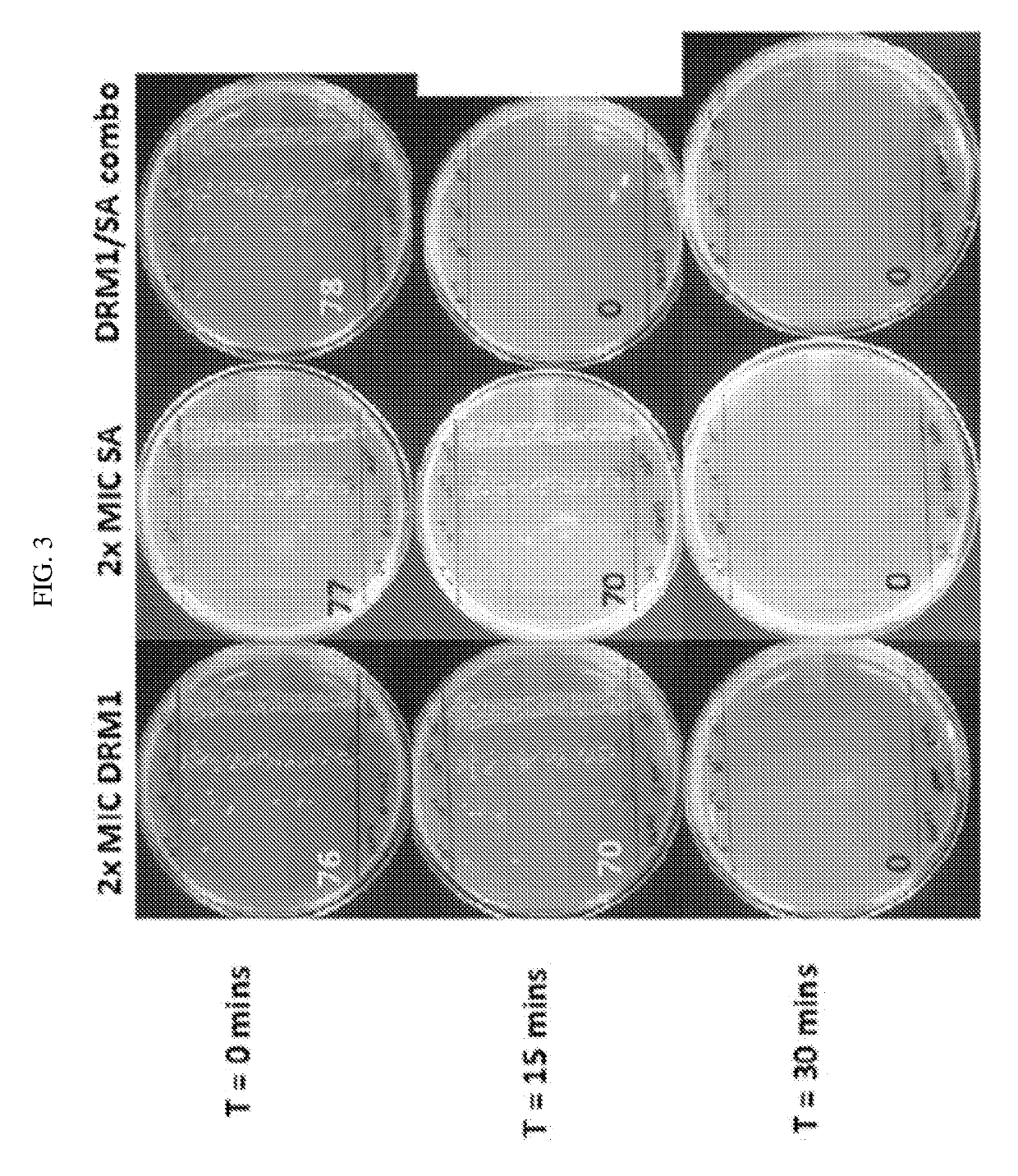Compositions and methods for treating acne vulgaris
- Summary
- Abstract
- Description
- Claims
- Application Information
AI Technical Summary
Benefits of technology
Problems solved by technology
Method used
Image
Examples
example 1
ple Illustrates the Antimicrobial Effect of Combinations of DRM1 (Succinic Acid) and Salicylic Acid Using a Checkerboard Assay Design
[0069]Bacterial Cultivation
[0070]P. acnes (ATCC 6919) was cultured on Brucella plates supplemented with 0.1 g / L hemin, 0.01 g / L vitamin K, and 5% (v / v) defibrinated sheep's blood at 37° C. under anaerobic conditions using a Gas-Pak (BD). For each assay, an inoculum of P. acnes was prepared by suspending a colony of P. acnes in 5 mL Reinforced Clostridium medium (RCM) and growing at 37° C. and 250 RPM under anaerobic conditions for 30 hours. Cultures were harvested, washed with PBS and resuspended in fresh, sterile RCM broth to a concentration of 2×106 CFU / ml.
[0071]Minimum Inhibitory Concentration (MIC) Determination
[0072]Individual MIC values were determined for each drug according to the microbroth dilution method. Briefly, 2-fold serial dilutions of each drug (50 μl) were added to wells in a 96-well plate followed by 50 μl of the prepared P. acnes in...
example 2
ple Illustrates the Time-Kill Assay of DRM1 (Succinic Acid) and Salicylic Acid in Combination
[0079]DRM1 (succinic acid) and salicylic acid were used individually at concentrations 2× their MIC values (30 mM DRM1 (succinic acid) and 15 mM salicylic acid) and in combination at 0.5×MIC for DRM1 (succinic acid, 7.5 mM) and 1×MIC for salicylic acid (7.5 mM) Assays were performed in RCM broth with 12% propylene glycol in 96-well plates. A final concentration of 5×105 CFU / ml P. acnes 6919 was used for each reaction and each assay was performed under anaerobic conditions using a Gas-Pak at 37° C. At various time points (0, 15, 30, 60 and 120 minutes) 10 μl of each sample was removed and diluted 1:10 to 1:104 in sterile PBS and 20 μl of each dilution was spread on a Brucella broth agar plate supplemented with 0.1 μg / ml hemin and 0.01 μg / ml vitamin K using the track plate method. FIG. 3 shows a consistent growth between all three samples and the control at 0 minutes. After 15 minutes, growth ...
example 3
ple Illustrates the Antimicrobial Effect of Combinations of DRM1 (Succinic Acid) and Azelaic Acid Using a Checkerboard Assay Design
[0080]Bacterial cultivation, MIC calculation and Checkerboard Assay design were as described in Example 1. Table 2, below, shows MIC values for Azelaic Acid.
[0081]As shown in FIGS. 4 and 5 and Table 2, the combined MIC of the two drugs was at 7.5 mM DRM1 (succinic acid) and 3.75 mM azelaic acid as seen in FIG. 4. This corresponded to an FICI of 1.0 suggesting the interaction between DRM1 (succinic acid) and azelaic acid was additive. Growth inhibition was seen when azelaic acid and DRM1 (succinic acid) were used at a ratio 1:32 when the concentration of DRM1 (succinic acid) was ≥15 mM and the concentration of azelaic acid was ≥0.47 mM, when azelaic acid and DRM1 (succinic acid) were used in a ratio of 1:8 when the concentration of DRM1 (succinic acid) was ≥7.5 mM and the concentration of azelaic acid was ≥0.94 mM, when azelaic acid and DRM1 (succinic aci...
PUM
| Property | Measurement | Unit |
|---|---|---|
| Fraction | aaaaa | aaaaa |
| Fraction | aaaaa | aaaaa |
| Fraction | aaaaa | aaaaa |
Abstract
Description
Claims
Application Information
 Login to View More
Login to View More - R&D
- Intellectual Property
- Life Sciences
- Materials
- Tech Scout
- Unparalleled Data Quality
- Higher Quality Content
- 60% Fewer Hallucinations
Browse by: Latest US Patents, China's latest patents, Technical Efficacy Thesaurus, Application Domain, Technology Topic, Popular Technical Reports.
© 2025 PatSnap. All rights reserved.Legal|Privacy policy|Modern Slavery Act Transparency Statement|Sitemap|About US| Contact US: help@patsnap.com



